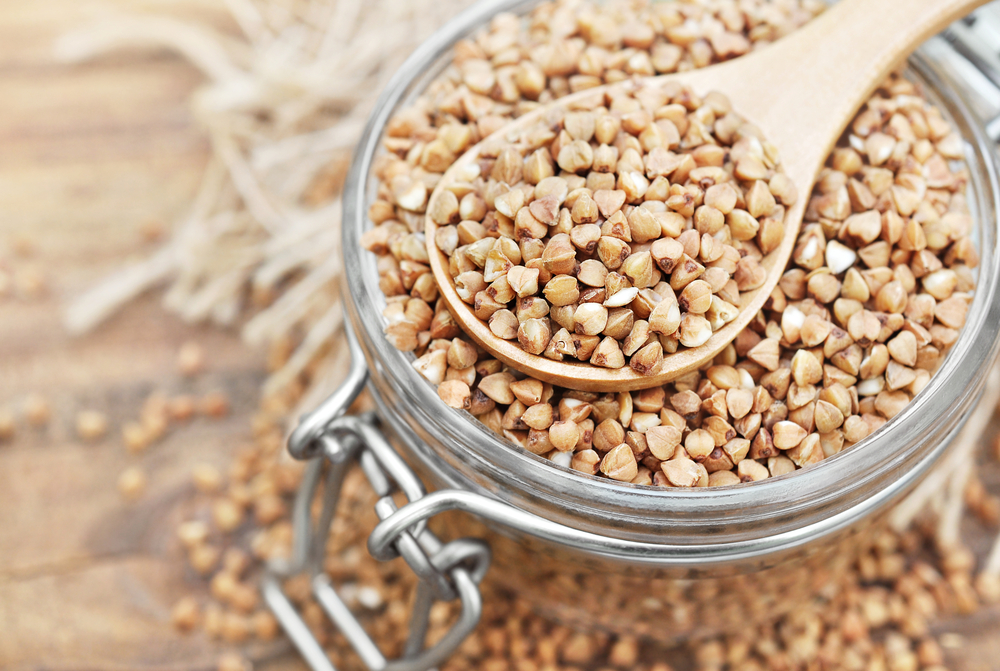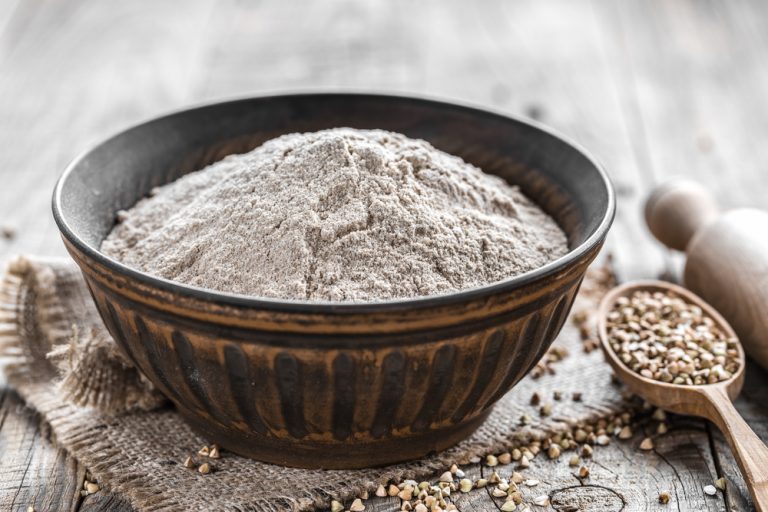Buckwheat flour is gluten-free, so its properties and nutritional values should be appreciated by people on a gluten-free and vegetarian diet. In addition to being gluten-free, it has a low glycemic index, which is why it has been used to balance a blood sugar level. Also, buckwheat flour is a good source of protein, especially important for vegetarians because it provides lysine and arginine – exogenous amino acids that are not synthesized in the body and can be deficient in a vegetarian diet. Check what other properties of buckwheat flour and try the recipe for homemade buckwheat flour.
What is buckwheat flour?
Buckwheat flour is made from buckwheat grains by grinding them intensively. It is characterized by a grey-brown colour, thanks to which it gives the products obtained from it a darker colour. The taste of buckwheat flour is characteristic and resembles that of buckwheat. Buckwheat flour is widely used in the food industry - for baking bread, making pasta, making cakes. It is used as a standalone base for pastries or in combination with wheat or other types of flour.

Buckwheat flour - the nutritional value and health benefits
Buckwheat flour is a naturally gluten-free product, so it can be successfully used by people with gluten intolerance. In addition, buckwheat flour is an excellent source of protein and fibre. Buckwheat flour has a low glycemic index, which makes it suitable for diabetics and people with elevated blood glucose levels.
Health properties of buckwheat flour
- improves digestion and supports muscle regeneration due to the high content of magnesium
- has a positive effect on the circulatory system, strengthens the walls of blood vessels and lowers blood pressure due to the presence of phosphorus, zinc and B vitamins
- lowers cholesterol levels due to the high content of dietary fibre
- protects against free radicals, protects DNA against being damaged and prevents the formation of cancer cells thanks to the presence of antioxidant compounds called polyphenols
- has a positive effect on the circulatory system, the formation and functioning of red blood cells, and fat metabolism due to the high content of copper
- helps to keep a stable level of blood glucose, which prevents the occurrence of diabetes and metabolic syndrome
- fights headaches and helps in dealing with depression
Buckwheat flour - application
Buckwheat flour in the food industry is used to make bread, cakes, rolls and pasta. For example in Ukraine, buckwheat flour is used in the preparation of soups. With buckwheat flour you can prepare:
- cakes, cookies, muffins
- pancakes, omelettes, fritters, waffles
- noodles, dumplings
If Buckwheat flour taste is too intensive for you, it can be mixed with a small amount of wheat flour. Then the taste of the dishes will be much softer. The bitterness characteristic of buckwheat flour will also be less noticeable. In addition, food will be less dry.
How to make buckwheat flour at home? Recipe for homemade buckwheat flour
Buckwheat flour can be easily prepared at home. You need a high-speed blender. Just put some buckwheat groats inside and turn on the blender! The groats should be ground until the flour is fine and the texture of it is homogenous.






